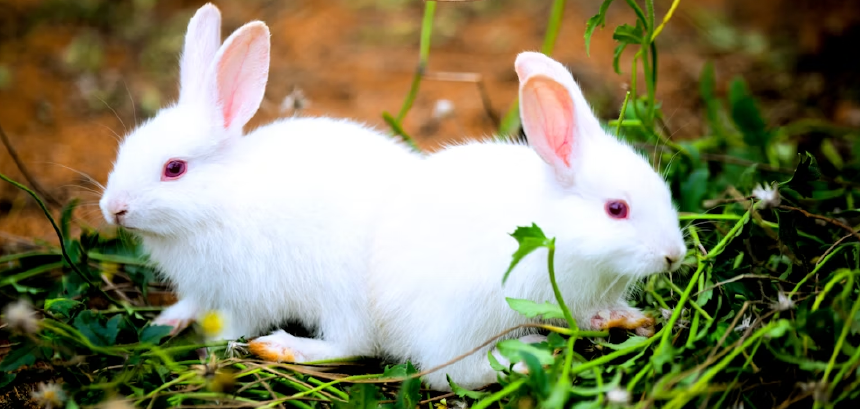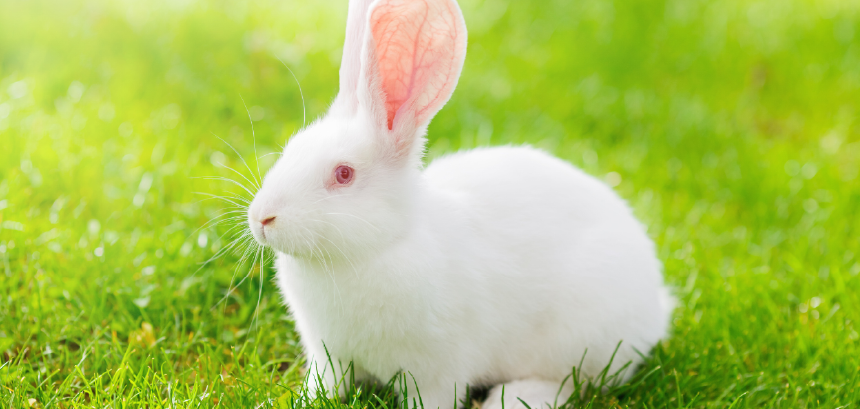
Health Issues of Albino Rabbits
Health Issues of the Albino Rabbit
The Albino rabbit is, distinguished by their white fur and red or pink eyes, are unique due to their lack of melanin. This absence of pigmentation not only gives them their distinct appearance but also predisposes them to several health issues. Understanding these challenges is essential for providing proper care and ensuring their well-being.
Fun Fact! The United Kingdom really is a nation of animal lovers! Did you know there are more pets in the UK than there are people!
“ Albino Rabbit ”
Sensitivity to Light
The Albino rabbits is highly sensitive to light due to the lack of pigment in their eyes. Their eyes can easily become strained or damaged by bright lights. This condition, known as photophobia, can cause discomfort and lead to behavioural changes such as hiding or reduced activity. To mitigate this, albino rabbits should be housed in areas with controlled lighting and provided with shaded areas to retreat to.
Eye Problems
The red or pink eyes of albino rabbits are more prone to various eye issues. These can include:
- Cataracts: A common problem that can lead to impaired vision.
- Infections: Their eyes are more susceptible to infections and require regular monitoring.
- Myxomatosis and Viral Haemorrhagic Disease (VHD): These diseases can affect the eyes and overall health, making vaccinations critical.
Skin Sensitivity
Albino rabbits have more sensitive skin due to the lack of protective melanin. This makes them prone to sunburn and skin damage. Owners should ensure these rabbits are kept out of direct sunlight for extended periods and consider using pet-safe sunscreens if outdoor exposure is unavoidable.
Increased Risk of Cancer
The lack of melanin increases the risk of skin cancer, particularly if albino rabbits are exposed to UV rays for prolonged periods. Regular veterinary check-ups can help in early detection and treatment of any skin abnormalities.
Hearing Issues
Some albino rabbits may have congenital hearing problems, although this is not universally the case. It is important for owners to observe their rabbits for any signs of hearing impairment, such as lack of response to sounds or unusual behaviours.
Immune System Weakness
Albino rabbits can have weaker immune systems compared to their pigmented counterparts. This makes them more susceptible to infections and illnesses. Maintaining a clean living environment and providing a balanced diet rich in nutrients is essential to bolster their immune health.
Dental Issues
Dental issues are common in rabbits, and albino rabbits are no exception. Overgrown teeth can lead to malocclusion and other dental diseases. Regular dental check-ups and providing appropriate chew toys can help maintain healthy teeth.
Special Dietary Needs
Due to their unique physiology, albino rabbits may benefit from a diet tailored to their needs. This includes:
- High-fibre diet: To ensure proper digestion and prevent gastrointestinal issues.
- Vitamin and mineral supplements: To support their overall health, especially if they have any deficiencies.
Behavioural Considerations
Albino rabbits may exhibit behavioural differences due to their sensory limitations. They might be more skittish or nervous and require a calm, stable environment to thrive. Gentle handling and a routine can help reduce stress.
Regular Veterinary Care
Given their predisposition to various health issues, regular veterinary check-ups are crucial for albino rabbits. These visits can help detect problems early and ensure that the rabbits receive appropriate care and treatment.
Albino Rabbit Care Conclusion
Caring for albino rabbits requires awareness and understanding of their unique health needs. By providing a suitable environment, a balanced diet, and regular veterinary care, owners can help their albino rabbits lead healthy and fulfilling lives. Awareness of their sensitivity to light, skin issues, and potential for immune and dental problems is key to ensuring their well-being. With proper care and attention, albino rabbits can thrive just like any other rabbit.
Further Reading:
Post a Comment
You must be logged in to post a comment.






